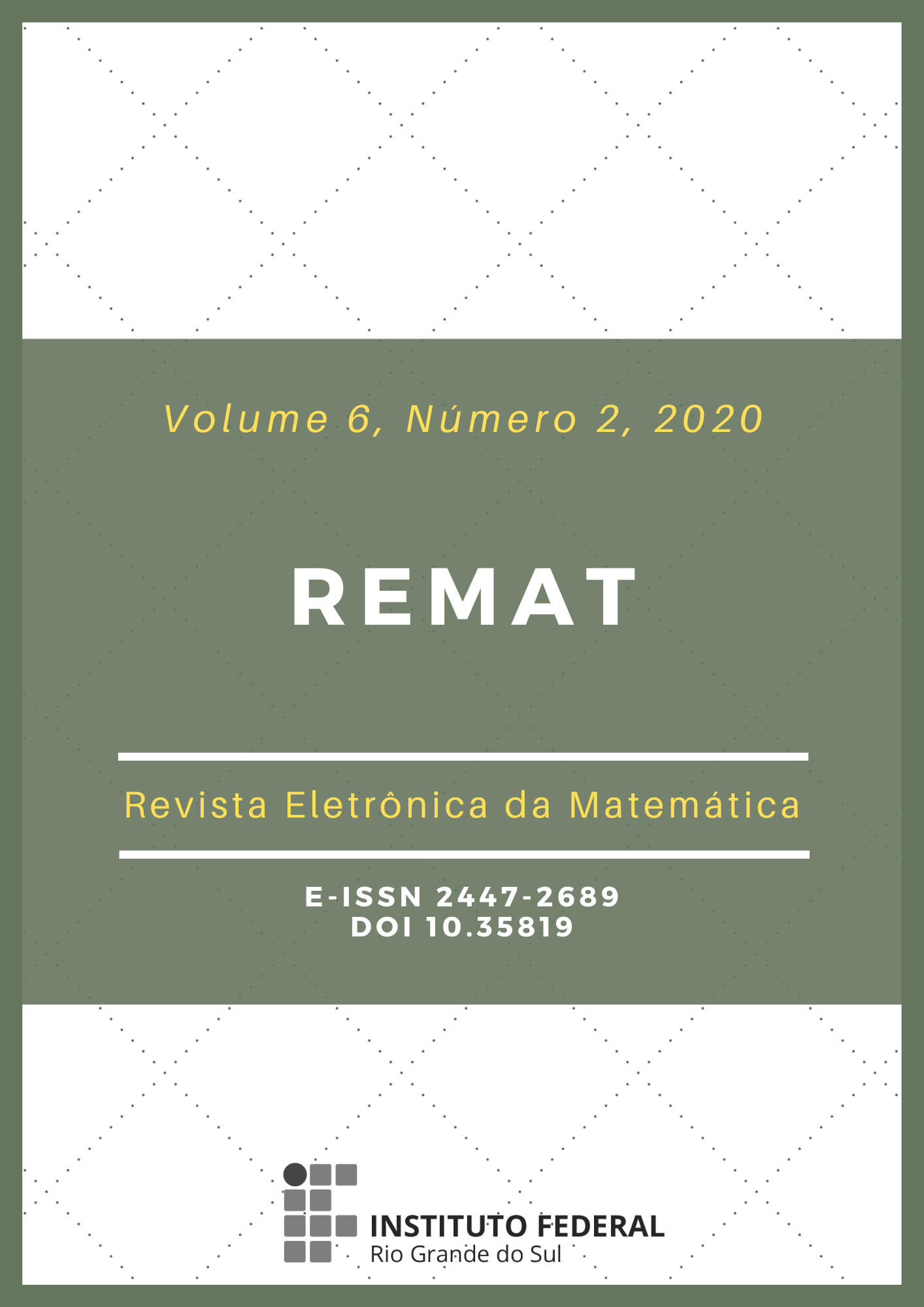A mathematical model for the interaction of a virus with the plasma membrane of cell
DOI:
https://doi.org/10.35819/remat2020v6i2id4149Keywords:
Green’s Functions, Modeling, Problems with Boundary ConditionsAbstract
Understanding the interactions of viruses with cell membranes is important for the proposal of vaccines and treatments for diseases caused by this type of contamination. An example of this is the case of the pandemic caused by the new Covid-19, which in 2020 placed was responsible for a third of the world under virus quarantine, causing huge economic losses and thousand of deaths across the planet. In this context, this research proposes to build a mathematical model for the interaction of a virus with the plasma membrane in a mammalian cell, which leads to a mathematical problem with boundary conditions. Using Green’s functions, the model was able to answer what is the general expression for potential electrostatic energy of this interaction in terms of Bessel functions and Wigner coefficients. It is reasonable to speculate, based on the results presented by the model, that a virus has to present an effective charge resulting in a solution with a pH value of about 7 to approach the cell membrane, while an electrically neutral virus should not have the ability to interact and enter membranes. The values ?for the interaction energy and the force between the membrane and the cluster offer the order of magnitude of the distances over which such interaction is effective.
Downloads
References
ALBERTS, Bruce; JOHNSON, Alexander; LEWIS, Julian; MORGAN, David; RAFF, Martin; ROBERTS, Keith; WALTER, Peter. Molecular biology of the cell. 6. ed. New York: Garland Science, 2015.
ATKINS, Peter; PAULA, Julia de; KEELER, James. Atkins Physical Chemistry. Oxford: OUP, 2018.
FESHBACH, Herman; MORSE, Philip M.; MICHIO, Masujima. Methods of Theoretical Physics. Mineola, NY: Dover Publications, 2019.
HILL, Terrell L. An Introduction to Statistical Thermodynamics. New York: Dover Publications, 1987.
JACKSON, John David. Classical Eletrodynamics. New York: John Wiley & Sons, 1998.
MESSIAH, Albert. Mécanique Quantique. v. 2. Paris: Dunod, 1995.
MORAIS, D. M. G. Interações Eletrostáticas de Aglomerados Moleculares em Eletrólitos. 2005. 64 f. Dissertação (Mestrado em Biofísica Molecular) ? Universidade Estadual Paulista, São Paulo, 2005.
TESO, Alexandre; DRIGO FILHO, Elso. AGOSTINHO NETO, Augusto. Solution of the Poisson-Boltzmann equation for a system with four ionic species. Journal of Mathematcal Biology, v. 35, n. 7, p. 814-824, ago. 1997. DOI: https://doi.org/10.1007/s002850050078.
VERWEY, E. J. W.; OVERBEEK, J. T. G. Theory of the Stability of Lyophobic Colloids. New York: Elsevier Publishing Company, Inc., 1948.
Downloads
Published
Issue
Section
License
Copyright (c) 2020 REMAT: Revista Eletrônica da Matemática

This work is licensed under a Creative Commons Attribution 4.0 International License.
REMAT retains the copyright of published articles, having the right to first publication of the work, mention of first publication in the journal in other published media and distribution of parts or of the work as a whole in order to promote the magazine.
This is an open access journal, which means that all content is available free of charge, at no cost to the user or his institution. Users are permitted to read, download, copy, distribute, print, search or link the full texts of the articles, or use them for any other legal purpose, without requesting prior permission from the magazine or the author. This statement is in accordance with the BOAI definition of open access.













 https://orcid.org/0000-0002-0893-7426
https://orcid.org/0000-0002-0893-7426


















